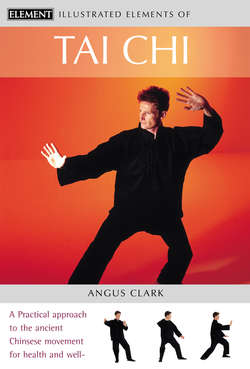Читать книгу Tai Chi: A practical approach to the ancient Chinese movement for health and well-being - Angus Clark - Страница 12
ОглавлениеThe Skeleton
THE BODY’S ARCHITECTURE provides the framework for the extraordinary variety of movement and bodily expression that is tai chi. The art makes full use of the combination of dexterity, flexibility, articulation, and movement capabilities that the skeleton, aided by ligaments, muscles, and tendons, makes possible. Knowing the basics of body architecture will deepen understanding of the tai chi postures. It will also give a sense of wonder at the sheer variety of movements the human body can perform, unparalleled in the rest of the animal kingdom.
The skeleton is the body’s frame, supporting it and giving it shape. The bony cavities of the skull, the rib cage, and the pelvic girdle provide protection for the body’s vital organs – the brain, the lungs, the organs of digestion, and the sexual organs. Design of the skeleton has evolved over millions of years to make it perfectly adapted for movement. The girders of a building are bolted into a rigid framework, but the skeletal bones are connected by joints held together by ligaments and operated by muscles. This system gives the body mobility.
Tai chi actively increases mobility in all the joints of the body, maintaining an especially strong focus on the ankles, knees, hips, shoulders, elbows, wrists, and spine. It achieves this mainly by encouraging the joints to open, that is, to relax completely.
Bone is living tissue made of active cells served by blood vessels and nerves, and the tissues in its spongy center carry out the vital task of making bone marrow. The red blood cells, which transport oxygen, are formed in the bone marrow along with white blood cells, which fight infection. Bones are fundamental to the body’s immune system.
Tai chi attributes another important function to the bone marrow. The teacher Cheng Man-ch’ing described the cultivation of chi in the lower tantien energy center, how it warms the fluids of the body and fills the hollow spaces of the bones. An adhesive substance forms, which turns into marrow and plates the insides of the bones like nickel or gold, giving them greater weight and pure hardness.
THE BONES
All bones begin as flexible cartilage, which forms in the womb. As the baby grows the cartilage is gradually converted into bones, which continue to lengthen and grow until the end of the teen years. A baby’s skeleton has more than 350 bones, many of which eventually fuse, so that an adult’s skeleton has only 206 bones.
THE SPINE
The spine is made up of 33 bones but only 25 joints because the last four bones are fused to form the coccyx (tail bone) and the five bones above them are fused to form the sacrum. Each bone is called a vertebra, and the vertebrae form groups, each of which differs slightly in its function. The vertebrae are separated by disks of cartilage, forming a slightly movable joint. These cartilaginous joints work together, allowing the spine to move forward, backward, and sideways. The spinal cord, a bundle of major nerve fibers, travels along a channel through the center of the vertebrae from the pelvis to join the brain.
The coccyx or tail bone consists of five fused bones. Like the sacrum, it moves only during pregnancy.
The bones, or vertebrae, and joints of the spine.
THE SACRUM
The broad shield-shaped bone at the base of the spine transmits the weight of the body from the fifth lumbar vertebra sideways to the pelvic girdle. The sacrum “sacred bone” forms the bottom bend of the spine’s s-curve. It forms a slightly movable joint with the fifth lumbar vertebra, but its side “wings” fit perfectly into the corresponding surfaces of the pelvic girdle, and ligaments secure the sacroiliac joints so firmly they are almost immobile. The sacrum is fundamental to the mechanics of tai chi movement.
THE JOINTS
The body has many other moving joints (see below). Although tai chi movements exercise all the body’s joints, they focus on opening and exercising the joints of the ankles, knees, hips, shoulders, elbows, and wrists, and on maintaining the mobility of the multi-jointed spine.
Ball and socket joint
A ball and socket joint is where the rounded head of one bone fits into a socket or hole in the adjoining bone. Ball and socket joints at the shoulders and hip allow the arms and legs almost 360° of movement.
Hinge joint
The knee, toes, fingers, and elbow are examples of hinge joints, which permit bending and straightening in one direction. A rounded bulge in one bone fits into a corresponding hollow in an adjoining bone. The two bones are held together by ligaments and encased in a capsule filled with a lubricating fluid.
Pivot joint
The first two cervical vertebrae in the neck form a pivot joint. A protuberance in the second cervical vertebra, called the axis, fits into a ring formed in the vertebra above it, called the atlas, allowing the neck to pivot from side to side.
